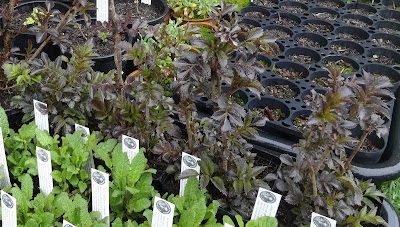A Comparison of Myoga Ginger Cultivars (Updated October 2023)

The following are my comparative observations of the various myoga ginger ( Zingiber mioga ) cultivars currently available in the United States. Clones currently found in the United States: 'Japanese Cream' - This was long circulated without a cultivar name, being simply sold and traded as myoga. This appears to be the old (mostly) sterile pentaploid Japanese form of myoga ginger. At my nursery I designate this plant as 'Japanese Cream' due to the cream color of it's flowers and to distinguish it from the other cultivars which are now available. Since it seems to be one of the most widely circulated clones in the United States I will use it as a reference point when comparing the others. 'Crûg's Zing' buds developing 'Crûg's Zing' - This is a clonally propagated selection which was brought back from Je-ju Island in South Korea. In this region the Zingiber mioga population is tetraploid and fertile which means that they reproduce both b


